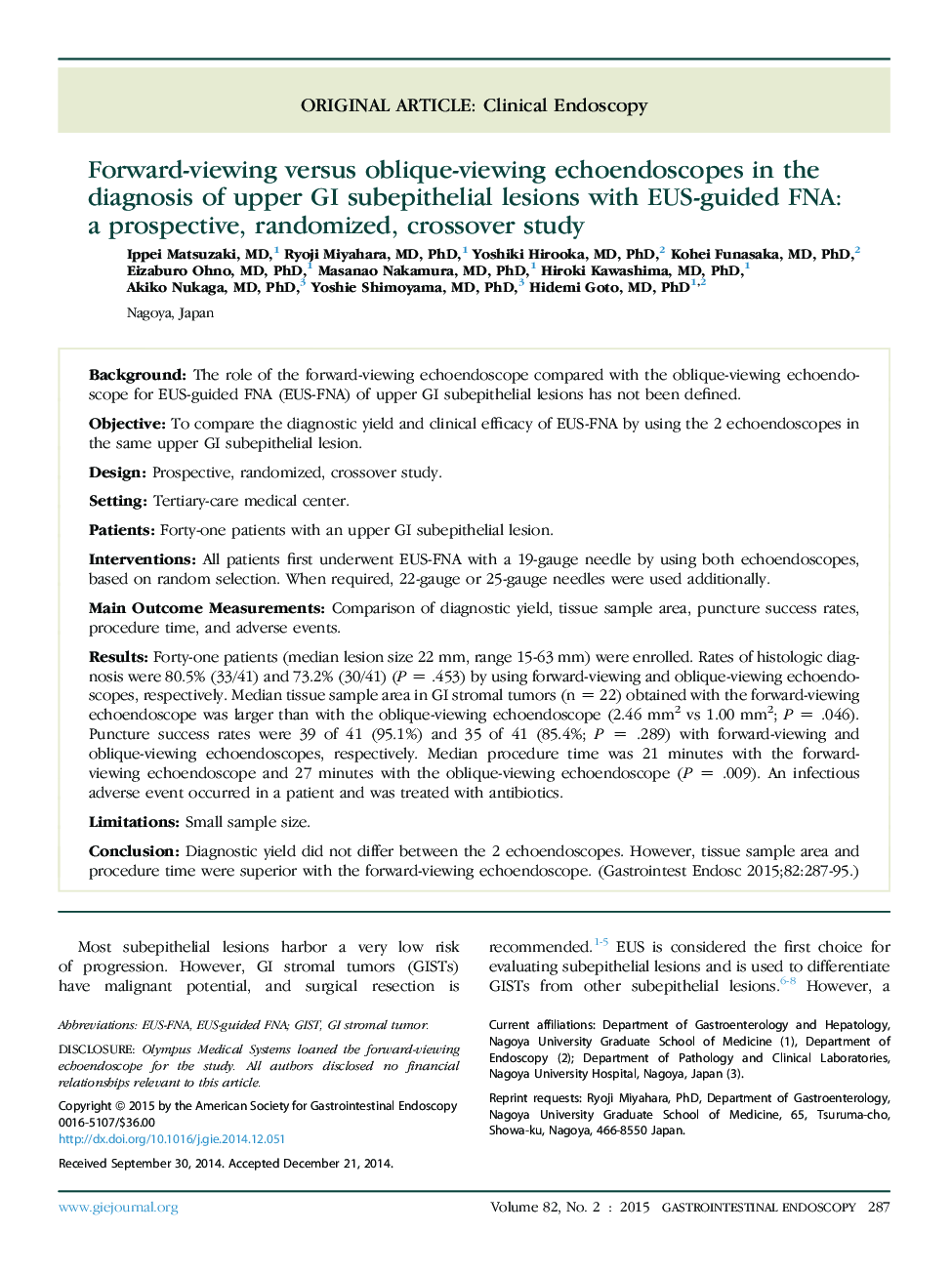| کد مقاله | کد نشریه | سال انتشار | مقاله انگلیسی | نسخه تمام متن |
|---|---|---|---|---|
| 6097709 | 1210292 | 2015 | 9 صفحه PDF | دانلود رایگان |

BackgroundThe role of the forward-viewing echoendoscope compared with the oblique-viewing echoendoscope for EUS-guided FNA (EUS-FNA) of upper GI subepithelial lesions has not been defined.ObjectiveTo compare the diagnostic yield and clinical efficacy of EUS-FNA by using the 2 echoendoscopes in the same upper GI subepithelial lesion.DesignProspective, randomized, crossover study.SettingTertiary-care medical center.PatientsForty-one patients with an upper GI subepithelial lesion.InterventionsAll patients first underwent EUS-FNA with a 19-gauge needle by using both echoendoscopes, based on random selection. When required, 22-gauge or 25-gauge needles were used additionally.Main Outcome MeasurementsComparison of diagnostic yield, tissue sample area, puncture success rates, procedure time, and adverse events.ResultsForty-one patients (median lesion size 22 mm, range 15-63 mm) were enrolled. Rates of histologic diagnosis were 80.5% (33/41) and 73.2% (30/41) (P = .453) by using forward-viewing and oblique-viewing echoendoscopes, respectively. Median tissue sample area in GI stromal tumors (n = 22) obtained with the forward-viewing echoendoscope was larger than with the oblique-viewing echoendoscope (2.46 mm2 vs 1.00 mm2; P = .046). Puncture success rates were 39 of 41 (95.1%) and 35 of 41 (85.4%; P = .289) with forward-viewing and oblique-viewing echoendoscopes, respectively. Median procedure time was 21 minutes with the forward-viewing echoendoscope and 27 minutes with the oblique-viewing echoendoscope (P = .009). An infectious adverse event occurred in a patient and was treated with antibiotics.LimitationsSmall sample size.ConclusionDiagnostic yield did not differ between the 2 echoendoscopes. However, tissue sample area and procedure time were superior with the forward-viewing echoendoscope.
Journal: Gastrointestinal Endoscopy - Volume 82, Issue 2, August 2015, Pages 287-295